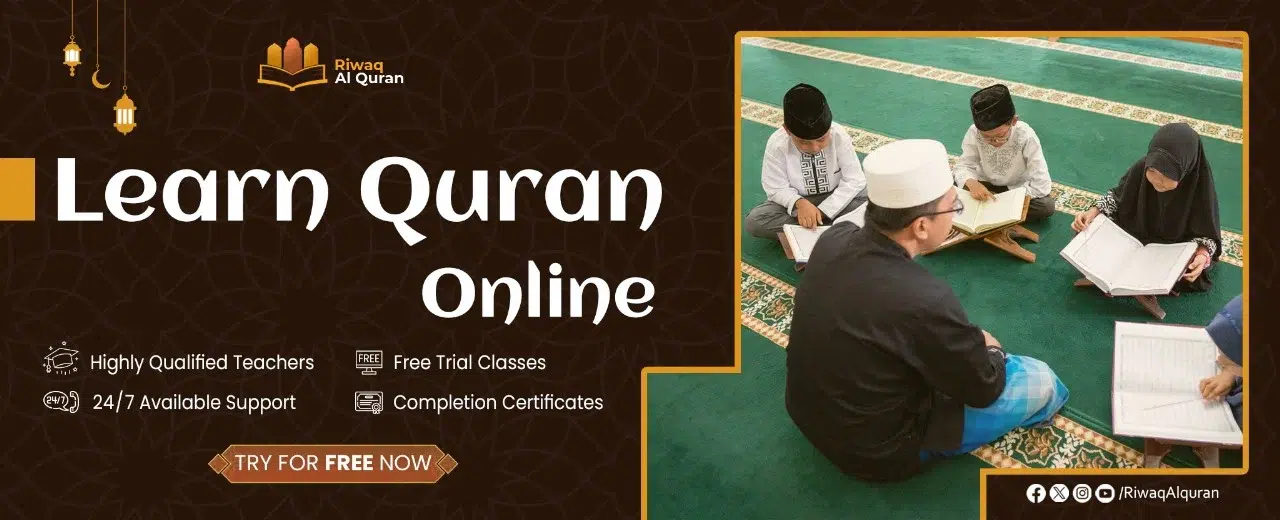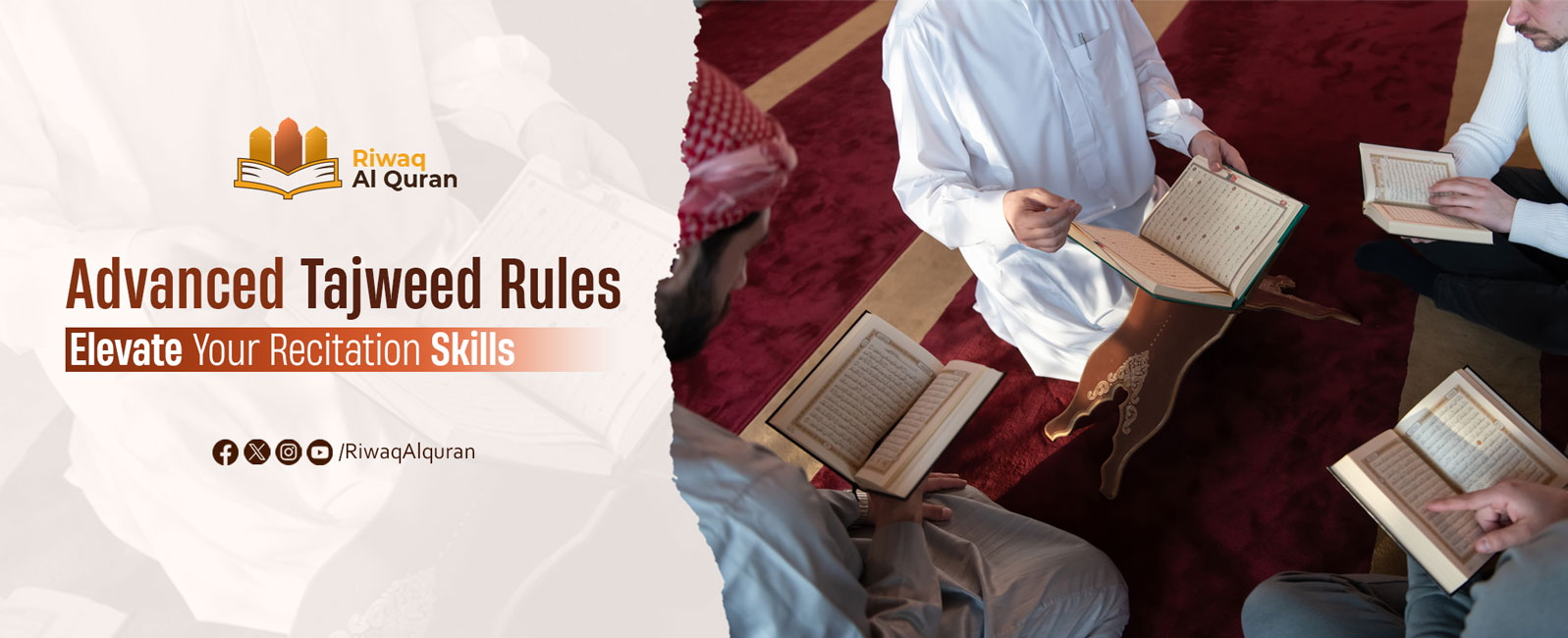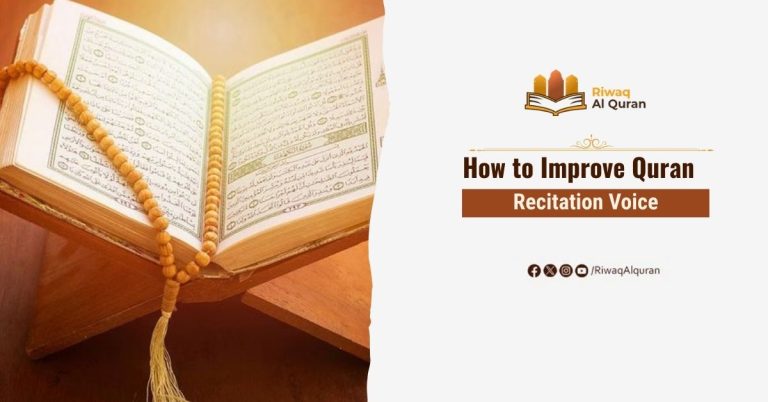Tajweed is definitely a noble knowledge to seek, as it enables us to correctly recite and precisely understand our Creator’s Holy Book. Undeniably, learning tajweed requires high attention and diligence for getting aware enough to apply each of its rules properly while reciting the Qur’an.
There are some basics to learn about tajweed to start with, and other advanced rules that help you master the right recitation of the Qur’an, exactly as it was revealed. Here, let’s get to know about some of the advanced tajweed rules.
The advanced tajweed rules are particular techniques to follow for more precise pronunciation of the subtleties of the Qur’an linguistic text. They deal with the more-complex details of the major, principal rules, and the nuances of the exact articulation of the phonetic interactions.
As said, the advanced tajweed rules include more branched details and precise techniques of articulating the letters’ phonetic interactions. Let’s take some examples:
Table of Contents
1. The Rules of Idgham (Merging):
Idgham refers to merging one letter into another, creating an emphasized letter, with the dominant characteristics of the merging letter. There are two types of idgham:
The Major Idgham:
It occurs when two of the same letters exist in a word, and both of them are voweled; and that result in getting emerged as one letter with a shaddah on it, like: مَا مَكَّنِّي : ma makannee – originally ( مكنَنِي ).
The Minor Idhgham:
It occurs when a voweled letter follows a non-vowel letter. This idghaam is under three categories:
Identical Letters (Mutamathil):
This idgham occurs when the letters being merged are produced from the same makhraj (articulation-exist), with the same characteristics, like: إِذْ ذَهَبَ: Ith-thahaba.—- قُل لَّا Qul laa
Proximate Letters (Mutaqarabin):
This idgham occurs when the letters being merged are produced from two close makhaarij, with different (yet similar) characteristics, like qaf and kaf in Arabic: يَخْلُقُكُمْ: nakhlukkum.
Homogeneous Letters (Mutajanis):
This idgham occurs when the letters being merged are produced from the same makhraj, but with different characteristics, like thal ذ and dhaa ظ, in إِذْ ظَلَمُوا : Ith-thalamoo.
2. The Rules of Tafkheem (Thickening), and Tarqeeq (Thinning):
Tafkheem is to thicken and emphasize the pronunciation of the letter, getting your mouth full of its echo. Those are the letters to apply tafkheem (خ- ص- ض- غ- ط- ق- ظ (, and there are letters that can be thickened or not: (ل-ر-ا ) and ghunna. Here are levels of tafkheem, applied on its certain letters, from the higher level to lower, as follows:
- Fatha Followed by Alif:
It is the highest level of takheem, like thickening Qaf in قال /Qaal/.
- Fatha without Alif:
Also, the letter gets thickened but not to the maximum, like khaa, in خَير /Khair/.
- Damma:
The letter with damma-vowel is also thickened to some extent, like in فليصُمه: / falyasumh/.
- Sukun:
When one of the tafkheem letter comes with no vowel, with sukun, it is thickened too, like: فاصبْر : /Fasber/
- Kasrah:
Even when those tafkheem-letters come with kasra, they get thickened but at the lowest level, like Qaf, in: قيل: /Qeel/.
Whereas, tarqeeq is thinning the letters’ pronunciation, not filling the mouth with its echo. The tarqeeq-letters are some cases of (ل-ر-ا), and the remaining letters of the Arabic alphabet, after excluding the tafkheem-letters, for sure.
Note:
(ل-ر-ا) are sometimes thickened and emphasized and sometimes light and thinned, like Alif got thinned and light, when being preceded by a light-letter, and got emphasized and heavy when being preceded by a heavy-letter, and lam got light when its vowel is kasra, and heavy when its vowel is damma, or fatha.
On the other hand, letter Raa has more various cases, that you can know by learning the advanced tajweed rules, to be a skillful reciter of the Qur’an!


3. The Rules of The Two Silent-Letters’ Meeting التقاء الساكنين:
In Arabic, you can’t pronounce two letters following each other, with no vowels. Sukun should be followed or preceded by a vowel. Still, you can read two non-vowel letters following each other in two cases:
- Within the Same Word:
- When the first of the two silent-letters is a soft or a long one, like عيْنْ /’Ainn/.
- When sukun of the second letter is actually due to stopping, like: وَالْعَصْرْ /Wa Al-‘Asr/.
- In Two Separate Words:
In Arabic, meeting two silent letters is not proper; yet, when that happens, there are two ways out for proper pronunciation:
1- Dropping the first silent letter, when it is a long vowel like ا; –اهدِنَا الصِّرَاطَ /Ihdinaa as-Sirat/ becomes “اهْدِنَ الصِّرَاطَ” /Ihdinassirat/.
2- Adding a vowel to the first silent letter, when it is a consonant, whether a fatha, a damma, a kasra:
Fatha: مِن المُؤْمِنِينَ /Min Al-mu’mineen/ becomes “مِنَ المُؤْمِنِينَ” /Mina Al-mu’mineen/.
Damma: ﴾وَأَنتُمْ الأَعْلَوْنَ /Wa antum Al-A’aloun/ becomes “وَأَنتُمُ الأعْلَوْن” /Wa antumu Al-A’aloun/.
Kasra: ﴾قُلْ الحَمْدُ لِلَّهِ /kul Alhamdulillah/ becomes “قُلِ الحَمْدُ لِلَّه” /kuli Alhamdulillah/.
4- The rules of “ال”, the Definite Article:
In Arabic, ‘ال’ is used to make the nouns definite. It is Alif Wasl + silent lam that precedes the nouns. It is an addition to the original, meaningful structure of the word.
As the lam is silent, it can precede all the Arabic alphabets, except the three long vowels –ا-و-ي- and the silent م، ن, to avoid meeting the silent consonants, as previously mentioned.
Example: the noun is كتاب, meaning any book, but by adding ال, becomes الكتاب, meaning a certain book I refer to.
5- The Rules of Lam Shamsiyyah, and Lam Qamariyah:
Here, we are talking about the ل in ال the definite article when joining the nouns; the pronunciation of this lam is whether articulated evidently (idhar), called lam Qamariyah, or emerged (idgham) in the following letter, called lam Shamsiyah.
- Lam Qamariyah (moon-lam):
As there is no similarity between the lam and those letters ( أ, ب, غ, ح, ج, ك, و, خ, ف, ع, ق, ي, م, ه) in characteristics and articulation-point, ل is clearly pronounced, as evident as the moon /qamar/ in the sky:
Like in: القواعد /Al Qawa’ed/- الخير /Al Khair/.
- Lam Shamsiyah (Sun-Lam):
As there is similarity between the lam and those letters ( ط, ث, ص, ر, ت, ض, ذ, ن, د, س, ظ, ز, ش, ل.) in the characteristics and articulation-point, ل is here emerged into the following letter, with shadda to stress, as sun lights are emerged into the sky:
Like in: الشمس /Ash-shams/- السائلين / As- sa’eleen/.
Definitely, there are more rules of the advanced tajweed to learn like the establishing and omitting muddood, and the types of Alif in the Qur’an, and so on. Yet, we just give some simple hinting examples here to have a look.
Read more about: Lahn – major and minor mistakes in tajweed
Why Learning the Advanced Tajweed Rules?
Learning the advanced tajweed rules qualifies you to recite the Qur’an precisely and flawlessly, duly preserving its nuances, letters, and meanings; that, in turn, enables your mind and heart to be wide open to the Qur’an guiding lights and blessings, getting you nearer to your Lord, which is key to His support and mercy, in this life and the hereafter.
Without a doubt, learning the advanced tajweed rules upgrades your level, making you professional in the recitation and comprehension of the Noble Qur’an; the Messenger of Allah (ﷺ) said,
“The one who is proficient in the recitation of the Qur’an will be with the honorable and obedient scribes (angels) and he who recites the Qur’an and finds it difficult to recite, doing his best to recite it in the best way possible, will have two rewards.”
[Al-Bukhari and Muslim].
Read more about: Reading the Quran with Tajweed – Full Guide
Who Are Qualified to Learn the Advanced Tajweed Rules?
The one qualified to learn the advanced tajweed rules is this who already learnt the basics of the Arabic language and tajweed. The learner should be already capable of reading Arabic well, and knowing of the principal tajweed rules, so that he can add to his previous knowledge for proficiency, perfecting his pronunciation of the Qur’anic words, all together, and aiming at more accurate, flawless recitation of the Qur’an.
How to Learn the Advanced Tajweed Rules?
Learning the advanced tajweed rules on your own can be confusing and challenging; whereas, it can be really interesting, and accurate learning process with the right techniques and the comprehensive plan provided by specialized, knowledgeable teachers who can correct and direct you right.
That is why you need to join a trusted Quran-learning academy like Riwaq Academy as it provides you with the full-package you need to master tajweed, whether professional teachers, a step-by-step plan, clear guidelines, constant practice, and all what needed.
Of course, that saves lots of time and efforts, and accelerates your learning process of tajweed to the maximum, helping you out to level up your recitation of the Holy Qur’an, till proficiency, and widen your awareness of this blessed Book, by learning it by heart.
Read more about: how many tajweed rules are there


Learn Quran, Arabic And Islamic Studies Online With The Best Native Tutors
Riwaq Al Quran is a comprehensive online platform that offers personalized Quran, Arabic and Islamic Studies Online classes for individuals of all ages and backgrounds.
Their experienced instructors use a structured curriculum to cover Tajweed, Tafsir, and Memorization, providing easy and effective access to learning the Quran.
The advanced online classes allow for seamless communication and interaction between students and teachers. Join Riwaq Al Quran for a deeper connection with the Quran.
We offer several courses such as:
- Online courses for kids.
- Online Quran classes for kids and adults.
- Online Arabic courses
- Online Ijazah courses
- Online Islamic Studies courses.
Here are a sample of our set of Quran Courses that will be helpful for you:
- Online Tafseer Course: Delve into Quranic meanings with our insightful online Tafseer course.
- Noorani Qaida Online: Learn Quranic basics efficiently through our Noorani Qaida online program.
- Online Quran Recitation Course: Enhance Quranic recitation skills through our expert-led online course.
- Online Tajweed Classes: Master Tajweed rules for beautiful Quranic recitation in online classes.
- Quran Memorization Online Course: Memorize the Quran effectively with our specialized online memorization course.
- Online Qirat Course: Explore diverse Qirat styles with our comprehensive online Qirat course.
Online Quran Classes for Kids: Nurture a love for the Quran in kids through interactive online classes.
Conclusion:
In conclusion, mastering the advanced rules of Tajweed is paramount for anyone seeking to perfect their recitation of the Holy Qur’an. These intricate principles, which govern the subtle interactions between letters like Idgham (merging), Tafkheem (thickening), and Tarqeeq (thinning), are the keys to unlocking a flawless and deeply resonant recitation.
For those ready to elevate their recitation, the journey into advanced Tajweed is most effectively undertaken with expert guidance. The complexity of rules such as Lam Shamsiyyah and Qamariyah, and the meeting of two silent letters, requires the keen ear and corrective feedback of a qualified teacher.
Enrolling in a specialized course will not only demystify these concepts but also provide the structured practice needed to apply them seamlessly, ultimately leading you toward the esteemed rank of a proficient reciter who recites the Qur’an as it was revealed.


































